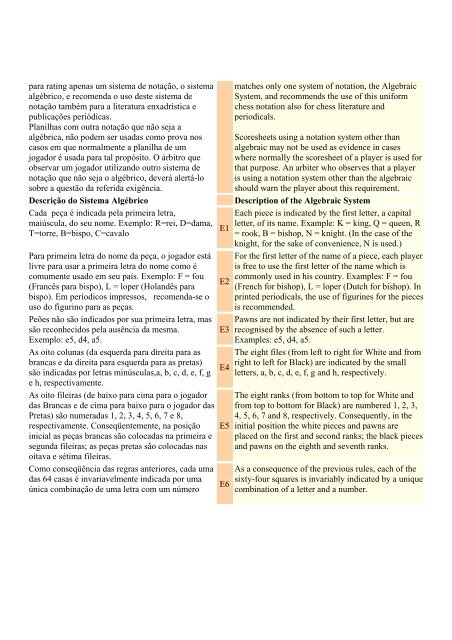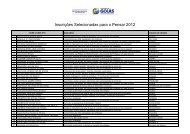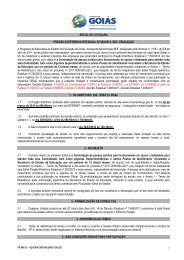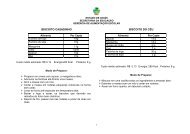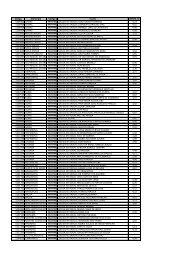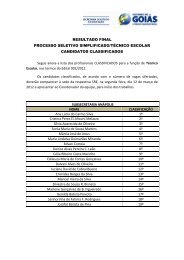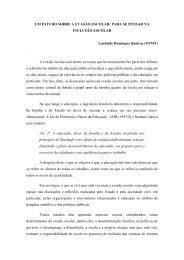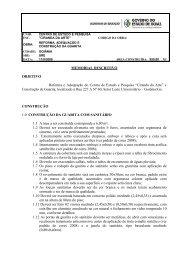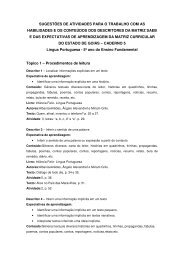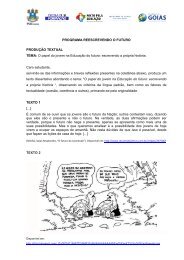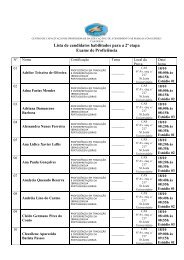You also want an ePaper? Increase the reach of your titles
YUMPU automatically turns print PDFs into web optimized ePapers that Google loves.
para rating apenas um sistema de notação, o sistemaalgébrico, e recomenda o uso deste sistema denotação também para a literatura enxadrística epublicações periódicas.Planilhas com outra notação que não seja aalgébrica, não podem ser usadas como prova noscasos em que normalmente a planilha de umjogador é usada para tal propósito. O árbitro queobservar um jogador utilizando outro sistema denotação que não seja o algébrico, deverá alertá-losobre a questão da referida exigência.Descrição do Sistema AlgébricoCada peça é indicada pela primeira letra,maiúscula, do seu nome. Exemplo: R=rei, D=dama,T=torre, B=bispo, C=cavaloPara primeira letra do nome da peça, o jogador estálivre para usar a primeira letra do nome como écomumente usado em seu país. Exemplo: F = fou(Francês para bispo), L = loper (Holandês parabispo). Em períodicos impressos, recomenda-se ouso do figurino para as peças.Peões não são indicados por sua primeira letra, massão reconhecidos pela ausência da mesma.Exemplo: e5, d4, a5.As oito colunas (da esquerda para direita para asbrancas e da direita para esquerda para as pretas)são indicadas por letras minúsculas,a, b, c, d, e, f, ge h, respectivamente.As oito fileiras (de baixo para cima para o jogadordas Brancas e de cima para baixo para o jogador dasPretas) são numeradas 1, 2, 3, 4, 5, 6, 7 e 8,respectivamente. Conseqüentemente, na posiçãoinicial as peças brancas são colocadas na primeira esegunda fileiras; as peças pretas são colocadas nasoitava e sétima fileiras.Como conseqüência das regras anteriores, cada umadas 64 casas é invariavelmente indicada por umaúnica combinação de uma letra com um númeroE1E2E3E4E5E6matches only one system of notation, the AlgebraicSystem, and recommends the use of this uniformchess notation also for chess literature andperiodicals.Scoresheets using a notation system other thanalgebraic may not be used as evidence in caseswhere normally the scoresheet of a player is used forthat purpose. An arbiter who observes that a playeris using a notation system other than the algebraicshould warn the player about this requirement.Description of the Algebraic SystemEach piece is indicated by the first letter, a capitalletter, of its name. Example: K = king, Q = queen, R= rook, B = bishop, N = knight. (In the case of theknight, for the sake of convenience, N is used.)For the first letter of the name of a piece, each playeris free to use the first letter of the name which iscommonly used in his country. Examples: F = fou(French for bishop), L = loper (Dutch for bishop). Inprinted periodicals, the use of figurines for the piecesis recommended.Pawns are not indicated by their first letter, but arerecognised by the absence of such a letter.Examples: e5, d4, a5.The eight files (from left to right for White and fromright to left for Black) are indicated by the smallletters, a, b, c, d, e, f, g and h, respectively.The eight ranks (from bottom to top for White andfrom top to bottom for Black) are numbered 1, 2, 3,4, 5, 6, 7 and 8, respectively. Consequently, in theinitial position the white pieces and pawns areplaced on the first and second ranks; the black piecesand pawns on the eighth and seventh ranks.As a consequence of the previous rules, each of thesixty-four squares is invariably indicated by a uniquecombination of a letter and a number.


